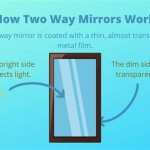How to Mirror iPad to Samsung TV Without WiFi
Mirroring an iPad to a Samsung TV can enhance viewing experiences, allowing for the display of photos, videos, presentations, and apps on a larger screen. While WiFi-based mirroring solutions are common, situations often arise where a WiFi network is unavailable or unreliable. This article explores alternative methods to mirror an iPad to a Samsung TV without relying on a WiFi connection, offering practical solutions for various scenarios.
The absence of WiFi necessitates the use of wired connections or alternative wireless protocols. Understanding the limitations and capabilities of each method is crucial for choosing the most suitable option. This article details the hardware and software requirements, step-by-step instructions, and troubleshooting tips associated with each approach, ensuring a seamless mirroring experience.
Using an HDMI Adapter
One of the most reliable methods for mirroring an iPad to a Samsung TV without WiFi is using a wired HDMI connection. This method involves utilizing a compatible adapter that connects to the iPad's charging port and provides an HDMI output. This allows for a direct, stable connection between the iPad and the TV, eliminating the need for a wireless network.
Hardware Requirements:
To utilize this method, the following hardware is required:
- HDMI Adapter: Specifically, a Lightning Digital AV Adapter (for iPads with a Lightning port) or a USB-C Digital AV Multiport Adapter (for iPads with a USB-C port). Ensure the adapter is compatible with the iPad model.
- HDMI Cable: A standard HDMI cable to connect the adapter to the Samsung TV. The length of the cable should be sufficient to reach between the iPad and the TV while accommodating comfortable placement of both devices.
- iPad: Any iPad model with a Lightning or USB-C port, depending on the adapter used.
- Samsung TV: A Samsung TV with an available HDMI port.
Software Requirements:
No specific software installations are necessary. The iPad's operating system (iPadOS) natively supports HDMI output through the adapter.
Step-by-Step Instructions:
- Connect the HDMI Adapter to the iPad: Plug the Lightning Digital AV Adapter or USB-C Digital AV Multiport Adapter into the iPad's charging port.
- Connect the HDMI Cable to the Adapter and TV: Plug one end of the HDMI cable into the HDMI port on the adapter and the other end into an available HDMI port on the Samsung TV.
- Select the Correct HDMI Input on the TV: Using the Samsung TV remote, navigate to the input selection menu and choose the HDMI input to which the iPad is connected.
- Mirroring: The iPad screen should automatically appear on the Samsung TV. If it does not, ensure the HDMI cable is securely connected and the correct input is selected on the TV.
Troubleshooting:
- No Image on TV: Verify that the HDMI cable is securely connected to both the adapter and the TV. Check the input selection on the TV to ensure it is set to the correct HDMI port. Try using a different HDMI cable or adapter to rule out faulty hardware.
- Image Quality Issues: Ensure the HDMI cable and adapter support the desired resolution. Lower resolution cables may result in blurry or pixelated images.
- Audio Issues: Confirm that the TV's audio settings are configured correctly. Also, check the iPad's volume settings to ensure audio is not muted.
- Adapter Compatibility: Use only adapters certified by Apple or reputable manufacturers to ensure compatibility and avoid potential damage to the iPad.
The HDMI adapter method provides a stable and reliable connection for mirroring an iPad to a Samsung TV without WiFi. It is particularly useful for situations where a wired connection is preferable, such as presentations, gaming, or watching videos with minimal latency.
Using a Direct USB-C to HDMI Cable (For USB-C iPad Models)
For newer iPad models equipped with a USB-C port, a direct USB-C to HDMI cable can provide a streamlined mirroring solution. This eliminates the need for an adapter, simplifying the connection process and potentially improving signal quality.
Hardware Requirements:
- USB-C to HDMI Cable: A high-quality USB-C to HDMI cable that supports video output.
- iPad: An iPad model with a USB-C port, such as iPad Pro (2018 and later) or iPad Air (4th generation and later).
- Samsung TV: A Samsung TV with an available HDMI port.
Software Requirements:
No specific software installations are necessary. The iPad's operating system (iPadOS) natively supports HDMI output through the USB-C port.
Step-by-Step Instructions:
- Connect the USB-C to HDMI Cable to the iPad: Plug the USB-C end of the cable into the USB-C port on the iPad.
- Connect the HDMI Cable to the TV: Plug the HDMI end of the cable into an available HDMI port on the Samsung TV.
- Select the Correct HDMI Input on the TV: Using the Samsung TV remote, navigate to the input selection menu and choose the HDMI input to which the iPad is connected.
- Mirroring: The iPad screen should automatically appear on the Samsung TV. If it does not, ensure the HDMI cable is securely connected and the correct input is selected on the TV.
Troubleshooting:
- No Image on TV: Verify that the USB-C to HDMI cable is securely connected to both the iPad and the TV. Check the input selection on the TV to ensure it is set to the correct HDMI port. Try using a different USB-C to HDMI cable to rule out a faulty cable.
- Image Quality Issues: Ensure the USB-C to HDMI cable supports the desired resolution. Lower quality cables may result in blurry or pixelated images. Look for cables that support 4K resolution for optimal viewing.
- Audio Issues: Confirm that the TV's audio settings are configured correctly. Also, check the iPad's volume settings to ensure audio is not muted.
- Cable Compatibility: Use a reputable USB-C to HDMI cable to ensure compatibility and avoid potential damage to the iPad or TV.
Using a direct USB-C to HDMI cable offers a convenient and efficient way to mirror a USB-C iPad to a Samsung TV without WiFi. This method minimizes potential points of failure associated with adapters and provides a direct connection for optimal performance.
Using a Mobile Hotspot (Limited Applicability)
While the primary focus is on solutions without WiFi, a mobile hotspot can be considered as a last resort if a true WiFi network is unavailable but the iPad has cellular data connectivity. This method creates a small, localized WiFi network using the iPad's cellular data, which the Samsung TV can then connect to for screen mirroring via standard WiFi protocols like AirPlay (if supported by the Samsung TV). However, this method is heavily reliant on a strong and stable cellular data connection, and consumes significant data.
Hardware Requirements:
- iPad with Cellular Data: An iPad model with cellular data capabilities and an active data plan.
- Samsung TV with WiFi: A Samsung TV that supports WiFi connectivity and screen mirroring protocols like AirPlay or Smart View.
Software Requirements:
- iPadOS: The latest version of iPadOS to ensure compatibility with mobile hotspot features.
- Samsung TV Software: Ensure the Samsung TV has the latest firmware updates installed for optimal performance and compatibility.
Step-by-Step Instructions:
- Enable Personal Hotspot on the iPad: Go to Settings > Personal Hotspot on the iPad and toggle the "Allow Others to Join" switch to on. Set a password for the hotspot for security.
- Connect the Samsung TV to the iPad's Hotspot: On the Samsung TV, go to Settings > Network > WiFi and select the iPad's personal hotspot from the list of available networks. Enter the password set in step 1.
- Enable Screen Mirroring on the Samsung TV: Depending on the Samsung TV model, this might involve enabling AirPlay in the settings or using the Smart View feature. Consult the TV's user manual for specific instructions.
- Initiate Screen Mirroring from the iPad: On the iPad, swipe down from the top-right corner to open Control Center. Tap the Screen Mirroring icon and select the Samsung TV from the list of available devices. If prompted, enter the AirPlay passcode displayed on the TV.
Troubleshooting:
- TV Cannot Connect to Hotspot: Ensure the iPad's personal hotspot is enabled and the correct password is entered on the TV. Check the signal strength of the cellular data connection on the iPad. Move the iPad closer to the TV to improve the WiFi signal.
- Screen Mirroring Fails to Initiate: Verify that the Samsung TV supports AirPlay or Smart View and that these features are enabled in the TV's settings. Ensure both the iPad and the TV are connected to the same hotspot network. Restart both devices.
- Poor Performance or High Data Usage: Screen mirroring over a mobile hotspot consumes significant cellular data. Monitor data usage to avoid exceeding data plan limits. The quality of the connection is highly dependent on the strength and stability of the cellular data signal. Lower the resolution of the mirrored content to reduce data consumption and improve performance.
It is important to acknowledge the limitations of this approach. Data charges can accrue rapidly, and the quality of the mirroring experience is directly tied to the strength and stability of the cellular data connection. This method should only be considered when other options, like HDMI connections, are not feasible.
In summary, mirroring an iPad to a Samsung TV without WiFi presents several possibilities, each with specific requirements and limitations. Wired connections through HDMI adapters or direct USB-C to HDMI cables provide the most reliable and stable experience. While the mobile hotspot method offers a temporary workaround, it is contingent on a strong cellular data connection and can lead to significant data consumption.

4 Simple Ways To Mirror Phone Screen Without Wifi

How To Cast Any Smart Tv Without Wifi Airdroid

2024 Tutorial How To Mirror Phone Tv Without Wi Fi

Simple Ways To Mirror Iphone Tv Without Wifi 6 Steps

How To Mirror Phone Tv Without Wifi 7 Easy Methods Gawvi

6 Free Ways To Mirror Iphone Samsung Tv Without Apple

Can You Screen Mirror Without Wi Fi 2024 Answered

4 Simple Ways To Mirror Phone Screen Without Wifi

Apple Tv And Ipad Airplay Mirroring Without An Internet Connection Simple Unknown Tricks Tips

How To Use Airplay Apple Tv Without Wi Fi Full Guide








